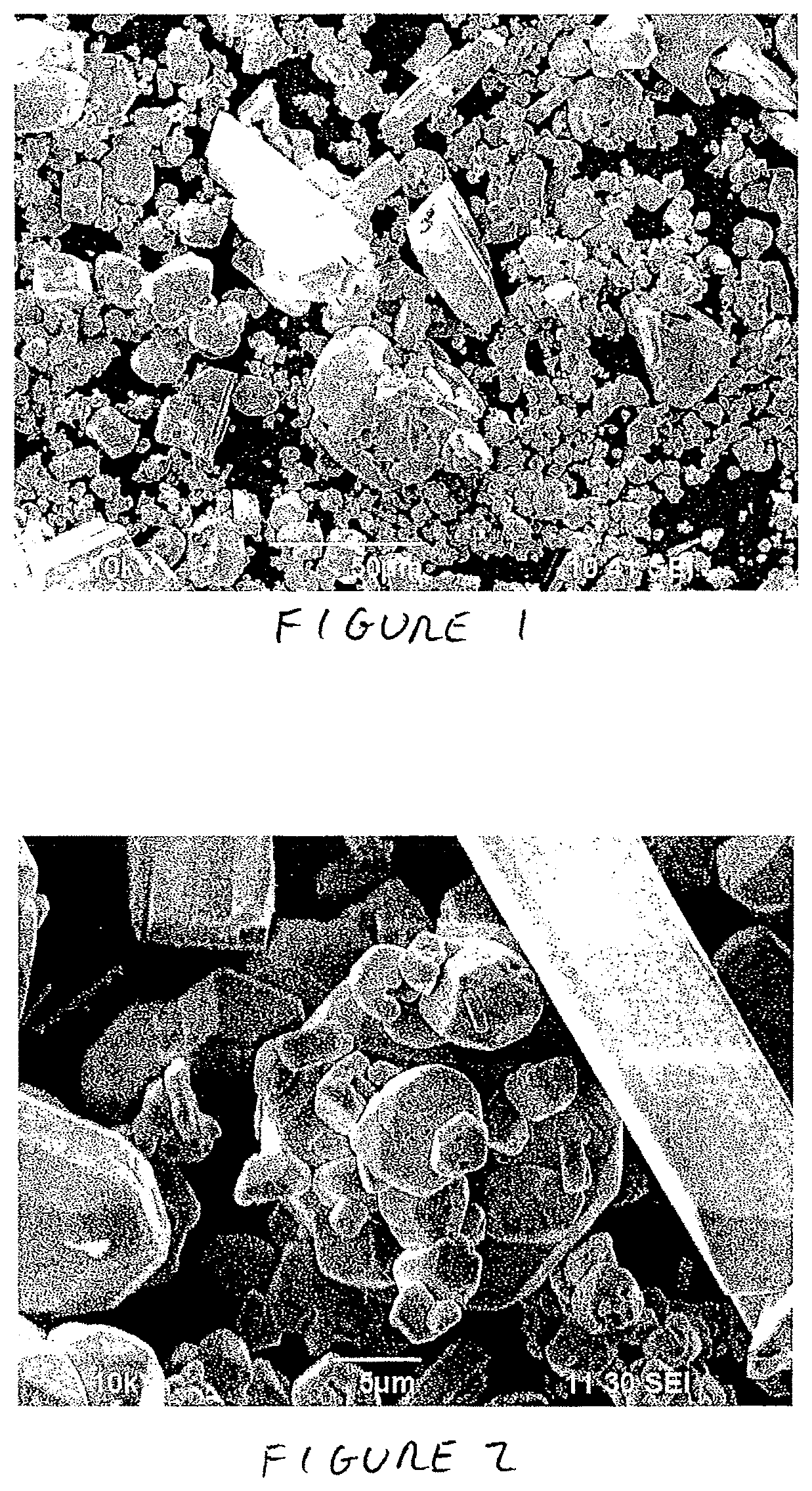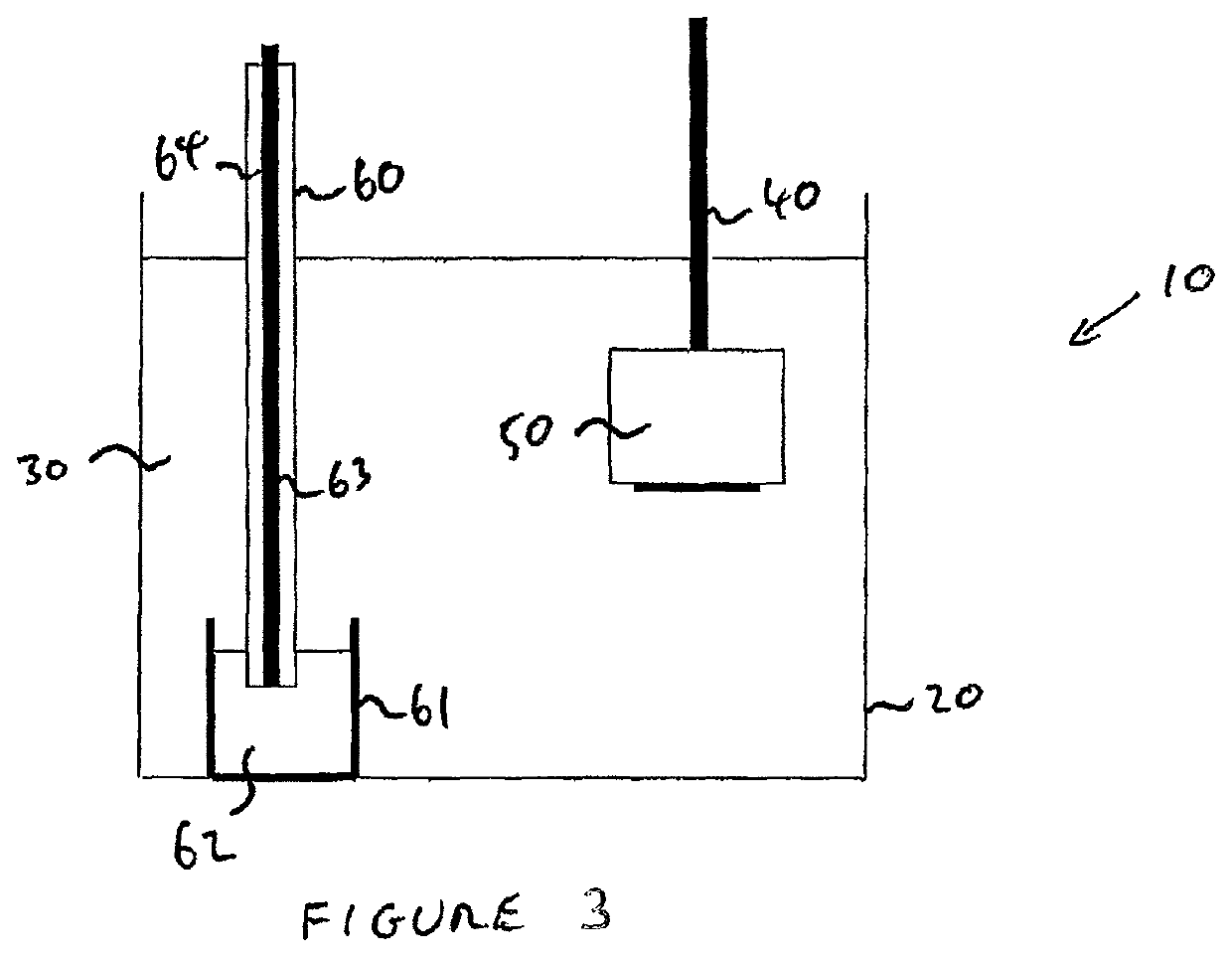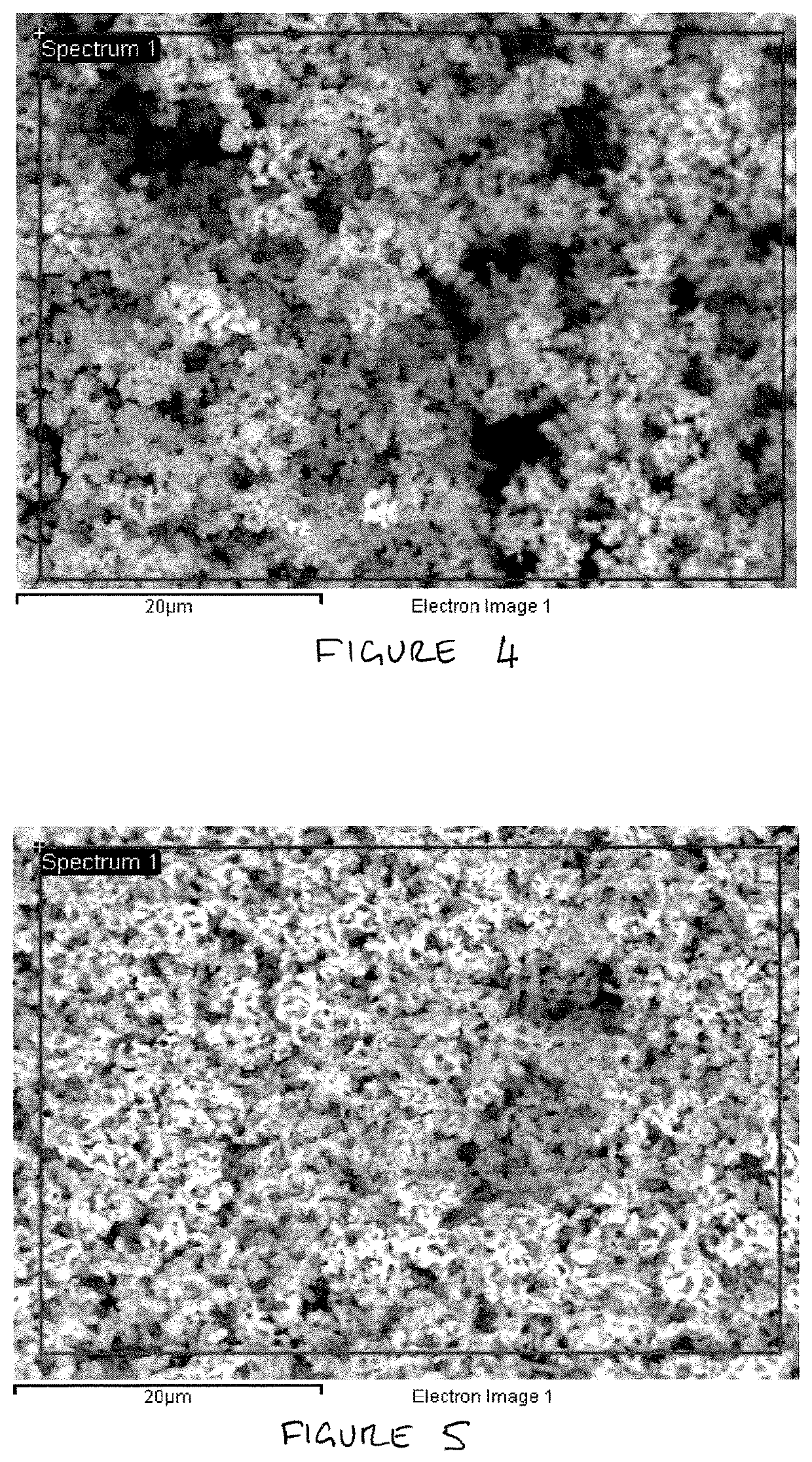Method of producing metallic tantalum
a technology of metallic tantalum and metal oxide, which is applied in the direction of basic electric elements, electrical apparatus, electrolytic capacitors, etc., can solve the problems of large amount of production, disadvantageous multi-step processes, and increase in oxygen conten
- Summary
- Abstract
- Description
- Claims
- Application Information
AI Technical Summary
Benefits of technology
Problems solved by technology
Method used
Image
Examples
example 1
[0100]A 38 g pellet of Ca3(CaTa2)O9was reduced to metal using a carbon anode. 277330 Coulombs were passed at a current of 3.5 Amps. The tantalum produced was recovered, analysed and found to have a surface area of 5.1 m2 / g, an oxygen content of 17000 ppm, and a carbon content of 5719 ppm.
example 2
[0101]A 20 g pellet of Ca3(CaTa2)O9 was reduced to metal using a molten zinc anode. 42458 Coulombs were passed at a current of 2 Amps. The tantalum produced was recovered, analysed and found to have a surface area of 5.6 m2 / g, an oxygen content of 21000 ppm, and a carbon content of 493 ppm. The carbon content can be seen to be considerably lower than the comparative example produced using a carbon anode (Example 1).
example 3
[0102]A 38 g pellet of Ca2Ta2O7was reduced to metal using a carbon anode. 270389 Coulombs were passed at a current of 3.5 Amps. The tantalum produced was recovered, analysed and found to have a surface area of 11.04 m2 / g, an oxygen content of 34000 ppm, and a carbon content of 1817 ppm.
PUM
| Property | Measurement | Unit |
|---|---|---|
| boiling point | aaaaa | aaaaa |
| melting point | aaaaa | aaaaa |
| particle size | aaaaa | aaaaa |
Abstract
Description
Claims
Application Information
 Login to View More
Login to View More - R&D
- Intellectual Property
- Life Sciences
- Materials
- Tech Scout
- Unparalleled Data Quality
- Higher Quality Content
- 60% Fewer Hallucinations
Browse by: Latest US Patents, China's latest patents, Technical Efficacy Thesaurus, Application Domain, Technology Topic, Popular Technical Reports.
© 2025 PatSnap. All rights reserved.Legal|Privacy policy|Modern Slavery Act Transparency Statement|Sitemap|About US| Contact US: help@patsnap.com



